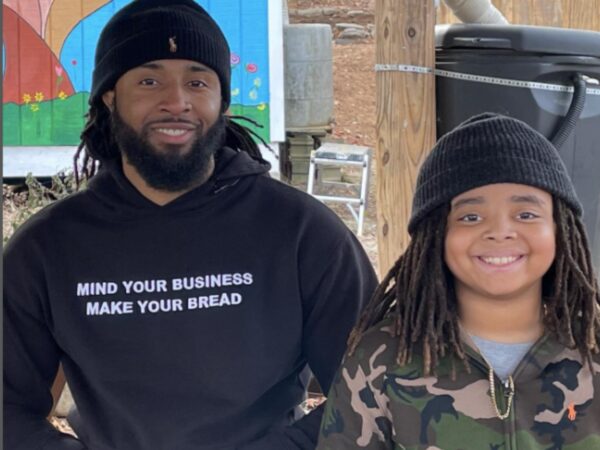When Kyren Gibson became a father, he realized that more than anything, he wanted his son, Kyng, to have a keen understanding of finances and money management.
Today, the father and son share their knowledge of financial literacy on various social media platforms and through their Instagram videos. Their account now has more than 300,000 followers. They have ventured into educational products, including a flash card app called Kyng & Kyren Generational Wealth Building.

“Everything I do is to make sure he’s better than me,” Gibson told Matter of Fact. “I don’t want him to be nothing like me, I want him to times-two me, and I want his kids to times-two him. That’s the mission, breaking generational curses.”
Gibson’s desire to teach his son financial literacy and share this information on social media reflects a common thread among Black families. A 2020 survey conducted by T. Rowe Rice found that Black parents discuss finances with their children more than other racial and ethnic groups. However, these findings are in contrast with the wealth generation gap in the United States, which has revealed that the average white family’s wealth is $188,200 compared to $24,100 for Black families.
“We know that having financial capabilities does not automatically equate to having the ability to build wealth,” Renee Christoff, head of Global Associate Engagement and Corporate Responsibility for T. Rowe Price, said in a statement. ”The factors contributing to the racial wealth gap are complex, intertwined with history, and we believe there is an opportunity for our financial education programming to address aspects of it.”
The survey found that while Black parents discussed topics such as how to earn money, budgeting, building savings and setting financial goals, they are also more likely to withdraw money from their retirement accounts to cover large expenses compared to their white peers. These findings reveal that Black families need to do more than just discuss financial literacy; they need to begin developing stronger money management skills to close the wealth generation gap.
Like Gibson, Ebony Beckford is actively working to share financial education with Black parents and their children. As the founder of Fin Lit Kids, Beckford designed the Fin Lit Kids Money Box, an activity box for kids ages three and up. Filled with engaging activities that teach children as young as three, Money Box teaches children to think critically about the importance of mone: how to earn, save, invest and donate while retaining wealth. And also like Gibson, Beckford is focused on providing parents with support in financial literacy education. On her website, Beckford provides guidance on how to use The Money Box effectively with children.
“There is only one real solution to closing the wealth gap and that is to start teaching people how to earn, save, and invest as early as possible,” Beckford stated on her website. “As simple as this sounds, it is a process that many of us fail to master because of the poor habits we’ve inherited and the lack of financial literacy we have obtained.”




